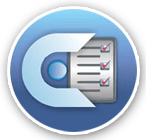Enter test paper generator software—a revolutionary tool designed to streamline the exam creation process, saving educators valuable time and enhancing the overall assessment experience. Whether you're a seasoned teacher or new to the education field, this beginner's guide will help you understand the benefits, features, and best practices for using test paper generators effectively.
What is a Test Paper Generator?
A test paper generator is a software application designed to automate the creation of examinations and assessments. These tools allow educators to input questions, specify formats, and generate professionally formatted exam papers with minimal effort. Advanced generators offer features like randomization of questions, integration with question banks, automatic grading, and analytics to track student performance.
Benefits of Using Test Paper Generators
1. Time Efficiency: Automate the repetitive and time-consuming task of manually compiling exams.
2. Consistency: Ensure uniform formatting and structure across all exam papers.
3. Customization: Tailor exams to specific topics, difficulty levels, and learning outcomes.
4. Randomization: Reduce the chances of cheating by randomizing question order and answer options.
5. Data Management: Easily store, retrieve, and manage large volumes of questions and exams.
6. Integration: Seamlessly integrate with Learning Management Systems (LMS) and other educational tools.
Key Features to Look For
When selecting a test paper generator, consider the following features to ensure it meets your educational needs:
1. User-Friendly Interface
• Intuitive design that requires minimal training.
• Drag-and-drop functionality for easy question placement.
2. Question Bank Integration
• Ability to create, store, and categorize a vast number of questions.
• Support for various question types (multiple-choice, true/false, short answer, etc.).
3. Customization Options
• Flexible formatting to match institutional standards.
• Options to include logos, headers, footers, and instructions.
4. Randomization Capabilities
• Shuffle questions and answer choices to create unique exam versions.
• Control over the degree of randomness to maintain exam integrity.
5. Automated Grading and Feedback
• Immediate grading for objective questions.
• Tools for providing feedback to students.
6. Security Features
• Password protection and access controls.
• Anti-cheating mechanisms like time limits and question timers.
7. Analytics and Reporting
• Detailed reports on student performance.
• Insights into question difficulty and reliability.
Popular Test Paper Generator Software Options
Here are some widely-used test paper generators that cater to various educational needs:
1. Google Forms
• Overview: A versatile tool for creating quizzes and exams with multiple question types.
• Pros: Free, easy to use, integrates with Google Sheets for data analysis.
• Cons: Limited customization and advanced features and higher cost, more complex setup
2. Microsoft Forms
• Overview: Part of the Microsoft 365 suite, suitable for creating assessments and surveys.
• Pros: Seamless integration with other Microsoft tools, real-time collaboration.
• Cons: Requires a Microsoft 365 subscription for full features and higher cost, more complex setup
3. Yoctel Chronon
• Overview: A professional Online testing platform offering robust exam creation tools.
• Pros: High security, detailed reporting, customizable branding.
• Cons: Subscription-based with no free version.
4. ExamSoft
• Overview: Comprehensive assessment software designed for higher education and professional certifications.
• Pros: Advanced analytics, secure exam delivery, offline capabilities.
• Cons: Higher cost, more complex setup.
How to Get Started with a Test Paper Generator
Step 1: Identify Your Requirements
• Determine the purpose of the exam (formative, summative, diagnostic).
• Decide on the types of questions you need (e.g., multiple-choice, essay).
Step 2: Choose the Right Software
• Based on your requirements, select a Test paper generator that offers the necessary features and fits your budget.
Step 3: Create a Question Bank
• Develop a repository of questions categorized by subject, topic, and difficulty level.
• Ensure questions are clear, unbiased, and aligned with learning objectives.
Step 4: Design the Exam Structure
• Define the number of questions, time limits, and scoring criteria.
• Decide on the layout and formatting preferences.
Step 5: Generate the Exam
• Use the software to compile the exam, applying any randomization or customization settings.
• Preview the exam to ensure everything appears correctly.
Step 6: Distribute the Exam
• Share the exam with students through the chosen platform (online or printed copies).
• Ensure all students have the necessary access and understand the instructions.
Step 7: Grade and Analyze Results
• Utilize the automated grading features to save time.
• Review performance analytics to identify areas for improvement.
Best Practices for Creating Effective Exams
1. Align with Learning Objectives: Ensure that all questions are directly related to the course goals and what students are expected to learn.
2. Balance Question Types: Use a mix of question types to assess different levels of understanding and skills.
3. Maintain Clarity and Precision: Write clear and concise questions to avoid confusion.
4. Avoid Bias: Ensure that questions are free from cultural, gender, or other biases.
5. Provide Clear Instructions: Clearly state what is expected in each section of the exam.
6. Review and Revise: Proofread the exam for errors and revise any ambiguous or unclear questions.
7. Pilot Testing: If possible, conduct a pilot test with a small group of students to identify potential issues.
Common Challenges and How to Overcome Them
1. Technical Difficulties
• Solution: Choose user-friendly software with good customer support. Invest time in learning the tool through tutorials and guides.
2. Question Bank Management
• Solution: Regularly update and organize your question bank. Use categorization and tagging to make retrieval easier.
3. Ensuring Exam Security
• Solution: Utilize software with robust security features like secure logins, timed exams, and question randomization.
4. Maintaining Fairness and Consistency
• Solution: Standardize question formats and grading criteria. Regularly review exams to ensure they are fair and unbiased.
5. Adapting to Diverse Learning Needs
• Solution: Incorporate a variety of question types and difficulty levels to cater to different learning styles and abilities.
Conclusion
Test paper generator software is a game-changer for educators seeking to enhance the efficiency and effectiveness of their assessment processes. By automating the creation of exams, these tools not only save time but also ensure consistency, fairness, and adaptability to various educational needs. As technology continues to evolve, the capabilities of test paper generators will only expand, offering even more innovative features to support modern teaching and learning.
Whether you're just starting out or looking to upgrade your assessment methods, embracing a test paper generator can significantly streamline your workflow and improve the quality of your exams. Take the leap today and transform the way you create and manage assessments!







